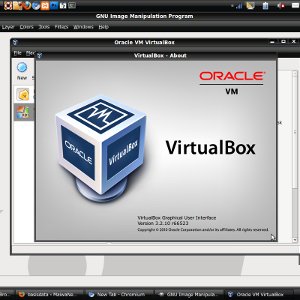
VirtualBox merupakan aplikasi komputer secara virtual. Jika pada saat akan menjalankan suatu sistem operasi dengan VirtualBox, terkadang muncul dua pesan error pada dua kotak dialog. Pesan error pertama yaitu:
Failed to open a session for the virtual machine winxp.
The virtual machine ‘winxp’ has terminated unexpectedly during startup with exit code 1.
Lalu saat mengklik detail akan muncul pesan:
Result Code:
NS_ERROR_FAILURE (0×80004005)
Component:
Machine
Interface:
IMachine {6d9212cb-a5c0-48b7-bbc1-3fa2ba2ee6d2}
Lalu pada kotak error dialog kedua muncul pesan:
Kernel driver not installed (rc=-1908)
The VirtualBox Linux kernel driver (vboxdrv) is either not loaded or there is a permission problem with /dev/vboxdrv. Please reinstall the kernel module by executing
‘/etc/init.d/vboxdrv setup’
as root. Users of Ubuntu, Fedora or Mandriva should install the DKMS package first. This package keeps track of Linux kernel changes and recompiles the vboxdrv kernel module if necessary.
Untuk mengatasi masalah tersebut, konek ke internet lalu buka terminal. Pada terminal ketikkan perintah berikut satu persatu: